HIST 308 10 Christianity and Renaissance Culture Ren Eur
St. Jerome in context
Developments we have seen in Renaissance art:
perspective
humanist study
Horace: “ut pictura poesis”
Saints and their lives
Why is that painting there? Why choose to pray there and not elsewhere?
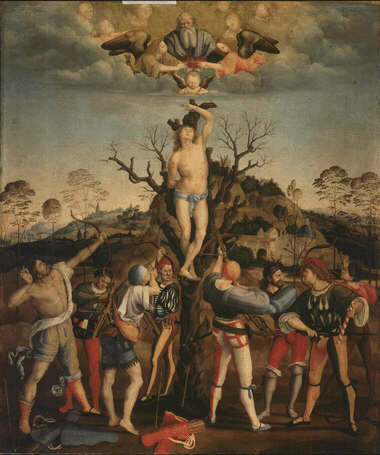
Ex: Girolamo Genga (Urbino 1476-1551), Martyrdom of Saint Sebastian (Uffizi)
Who are saints?
some: alive during Jesus’ life
exx: apostles, Holy family
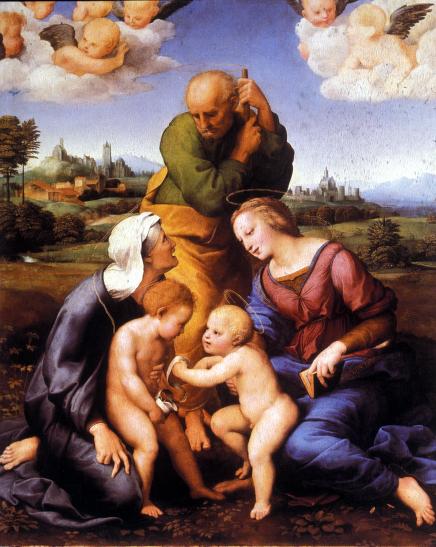
Raphael, Holy Family with St. Elizabeth and Young St. John, ca. 1505
martyrs; bishops; legendary figures with folk tales; local holy people
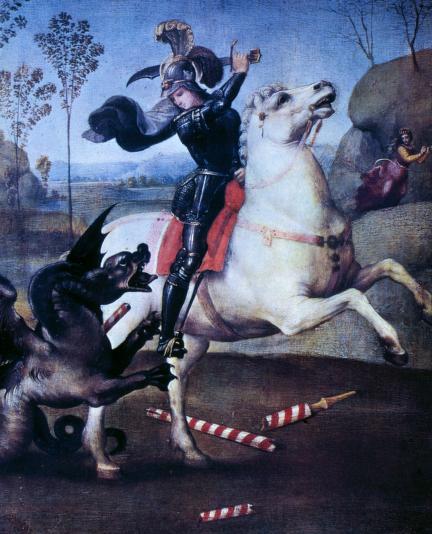
Raphael, St. George and the Dragon, 1505
choice: why ask for help from a given saint
- local tradition
- profession or problem
ex: St. Joseph and carpenters
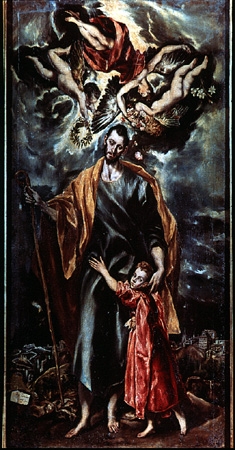
El Greco (1541-1614) St. Joseph and Child Jesus
St. Lucy and eye trouble
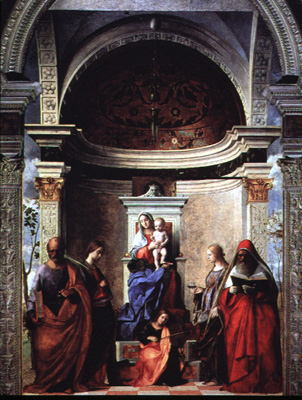
Giovanni Bellini, Madonna and Child with SS. Peter, Catherine, Lucy, Jerome (1505)
religious order
“political” reasons
–ex: Medici family S. Lawrence, Cosmas and Damian
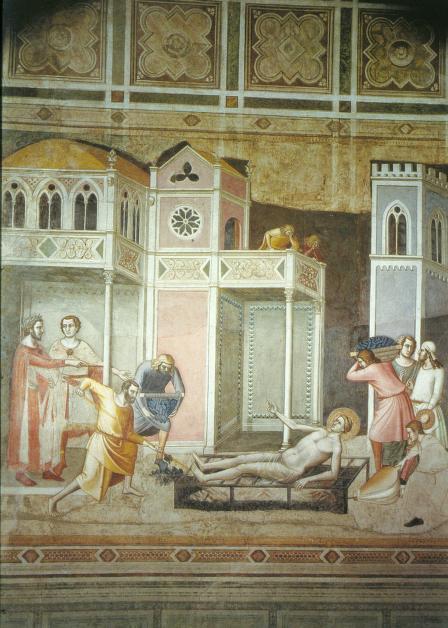
Bernardo Daddi (fl. c. 1320-80), Martyrdom of St. Lawrence. Florence, Pulci and Berardi Chapel
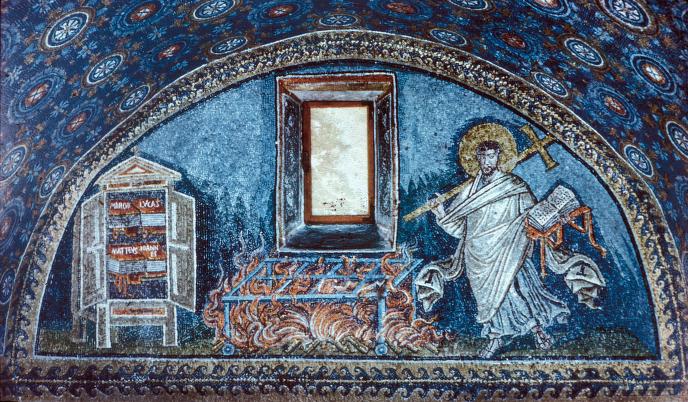
Tomb of Galla Placidia (5th c): St. Lawrence
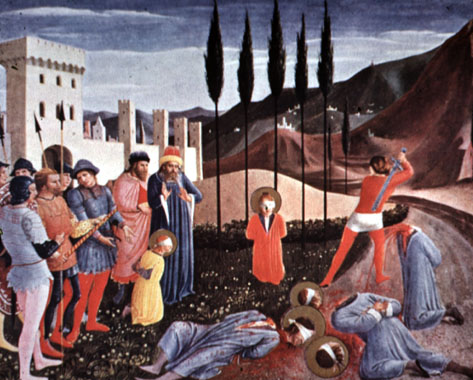
Fra Angelico, 1390-1455. San Marco Altarpiece, Decapitation of SS.Cosmas and Damian
exemplify qualities seen to be important
for local clergy
for lay people
Jerome
What did the humanists see in him?
biblical scholar—translator of the Vulgate
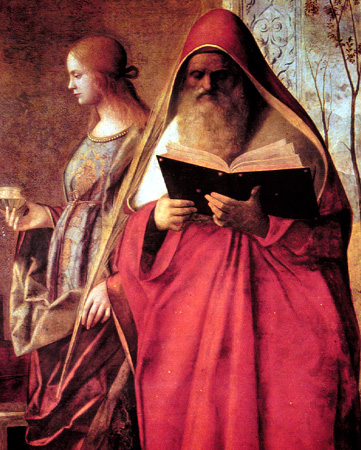
Jerome Giovanni Bellini: detail, Madonna and Saints
scholar of ancient letters who was also a Christian
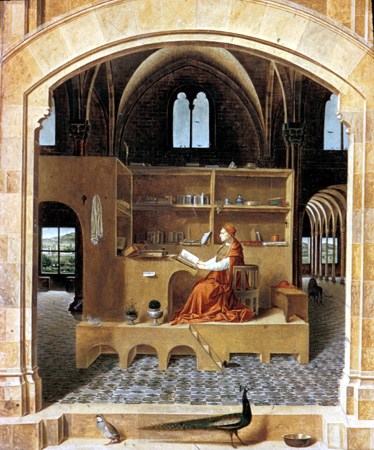
Antonello da Messina (1420-1479): St. Jerome in his Study
hermit wrestling with demons: inner spirituality, internal personal crises
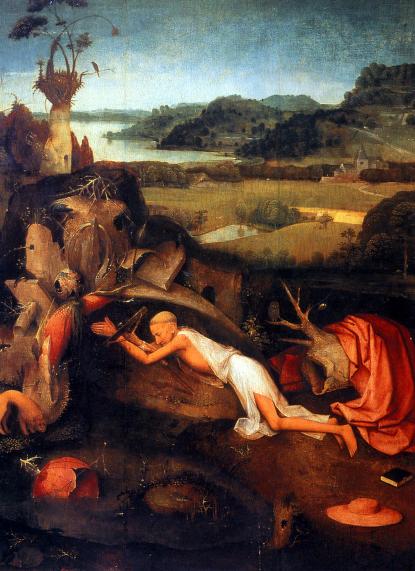
Bosch, Hieronymus, 1440-1516, St. Jerome in Prayer
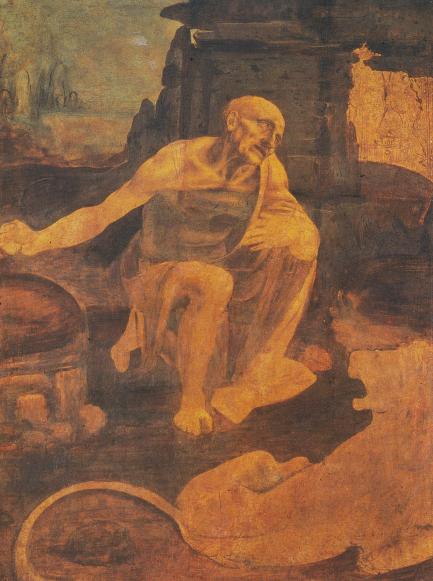
Leonardo da Vinci, St. Jerome, c1483
Humanists and religion
lay or clerical
humanists as editors and translators.
patristics
humanists as writers about modern experience
subjects: ex: mourning and consolation
genres: poetry, letters
professional divide: theology degrees
Exx: Brandolini; Lorenzo Valla (ca 1407-57)
Theology
patristic revival
Bible
Church and spread of humanist studies
Roman curia
Theology faculties
dissent and debate
Northern European trends
not at first related to humanist movement
urbanization
Beguines (Beghards)
German, Flemish cities
Decline ca. 1400
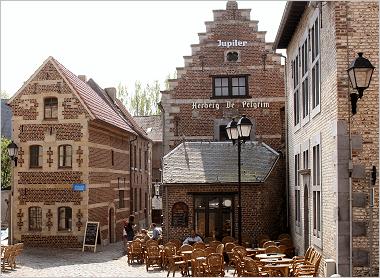
Beguinage, Tongeren (Belgium) founded 1257 Tongeren
Brothers and Sisters of the Common Life
Gerhard Groote (1340-84) of Deventer; son of cloth merchant
Sisters: no vows or habit
promise to serve God, to live simply, to work for their living
Houses for men; spread through N. Europe
Close relationship with Augustinians
elevation of lay life
emphasis on personal devotion
individual reading of the bible, church fathers, other devotional works
